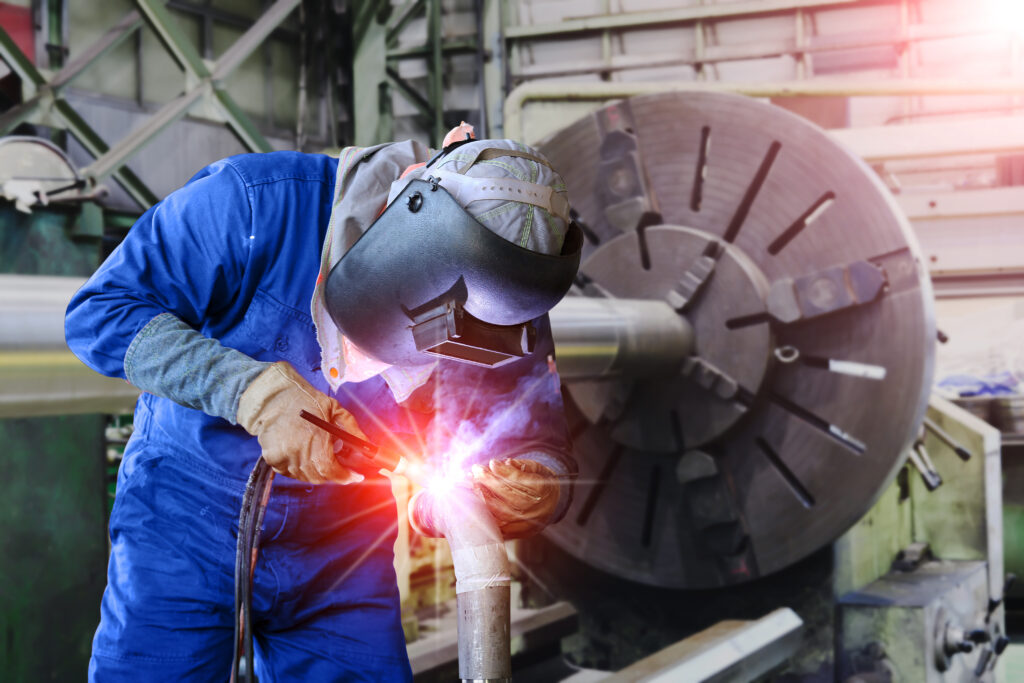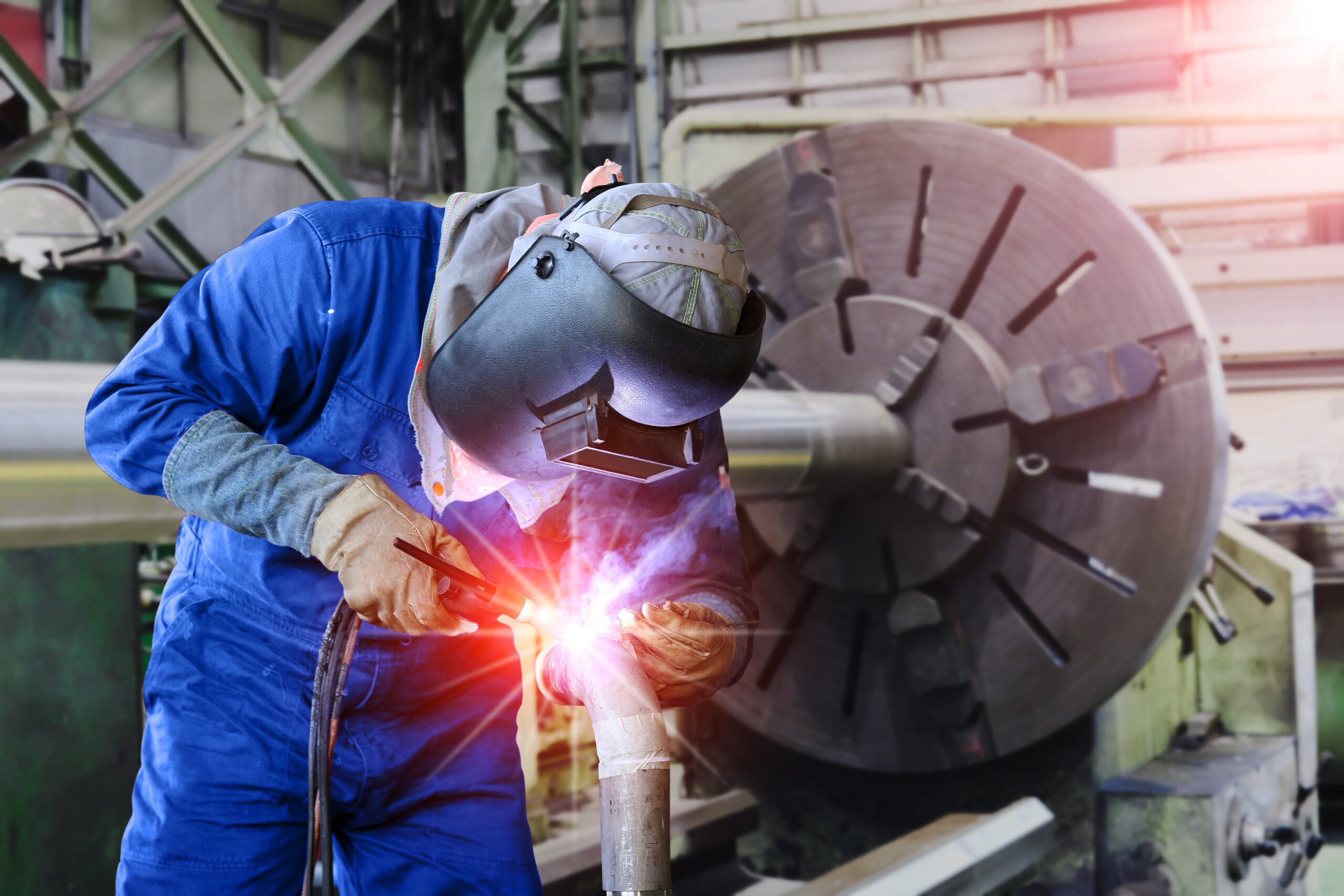
Serving as a cornerstone for the fabrication and construction of metal structures, welding requires precision, skill, and attention to detail to create strong and durable weld joints. One small incident while welding can cause massive rework and potentially fatal injuries. Fortunately, there are safety procedures and devices that are put in place to prevent such incidents from happening. One device that is especially crucial in the productivity, quality, and safety of the welding process is a welding positioner.
So today, we will delve into the various pains of welding without proper positioning and explore the importance of correct positioning in achieving optimal welding outcomes.
| What Is a Welding Positioner |
| A welding positioner is a mechanical device or apparatus used in welding operations that slowly rotates workpieces to a position and holds it in the desired orientation, angle, or alignment. |
How Do Positioners Improve The Quality of a Weld?
Welding positioners offer a variety of benefits that help welders produce an efficient and quality piece without extra exhaustion and effort.
They provide a stable and secure platform for holding and positioning workpieces during welding, eliminating the need for welders to manually manipulate heavy or awkwardly shaped objects. This reduces the risk of strain or fatigue-related injuries, therefore reducing safety hazards and/or rework of the piece.
Welding positioners also allow for precise control over the orientation and angle of the workpiece, ensuring accurate and consistent welds. By enabling rotation, tilting, or manipulation of the workpiece, the welder’s range of visibility of the piece increases, providing them with easy access to all sides, corners, and joints, leading to improved weld quality.
Moreover, welding positioners save time by eliminating the need for frequent repositioning of the workpiece, enabling welders to focus more on the welding process itself. Therefore, welders are able to produce better pieces more frequently.
The Effective Use of A Welding Positioner
To fully capitalize on the benefits of a welding positioner, it is essential to understand how to use it effectively. Operators need to consider the type of positioner they will be working with, what the best practices are, and what types of accessories may enhance the benefits of the weld.
Types of Positioners
Different welding positioners are meant for working with various workpieces. The shape, weight, type of weld, rotation, and size of the material can differentiate which positioner to use.
| Type of Positioner | Turning Rolls | Tilt/Turn Positioner | Welding Turntable | Rotary Welding Positioner | Headstock/Tailstock Welding Positioners |
| Specifications | When needing to position heavier cylindrical workpieces | When needing to position a workpiece both horizontally and vertically | When needing a workpiece to be rotated about on just a vertical axis | When needing to position spherical workpieces | When needing to position long rectangular workpieces that require support from both ends |
| Use Cases | Pressure Vessels, Multi-Sided Poles | Flanges, Elbows | Shafts, Wheels, Pipes | Hollow Spherical Joints | Railroad frames, Truck frames |
Best Practices
It is essential to follow best practices when utilizing welding positioners. Whether you are a seasoned welder or just starting out, understanding and implementing these best practices will help you unlock your full potential, enabling you to achieve exceptional welding results while streamlining your workflow.
- Find the workpiece’s center of gravity before attaching it to the welding positioner.
- Ensure the workpieces are attached properly. This is where separation or misalignment can take place.
- Keep the positioner on a flat and stable surface to avoid injuries and inconsistent welds.
- Keep up with consistent maintenance to ensure the reliability of the equipment before every weld.
Welding Positioner Accessories
Although a welding positioner within itself provides various advantages to the operator, to achieve optimal use, it’s necessary to utilize various extensions and attachments alongside the welding positioner.
These accessories can provide welding positioners extra support for various welding applications.
- Welding clamps can be adjusted and attached to the positioner to provide additional support and prevent unwanted movement or vibration, resulting in more precise and consistent welds.
- Torch holders can be attached to the welding positioner so operators can achieve consistent torch angles and orientations. This helps reduce errors or inconsistencies in the weld bead.
- Wire feeders, often used in metal inert gas (MIG) or flux-cored arc welding (FCAW) processes, can be attached to the welding positioner for automated wire feeding. This ensures a continuous and controlled supply of filler metal to maintain consistent weld quality.
- Seam trackers can detect and track the joint or seam being welded. When attached to the welding positioner, these devices can provide real-time feedback and automatically adjust the positioner’s movements to maintain precise alignment and follow the joint accurately, improving weld accuracy and consistency.
Achieve The Best Weld With The Best Equipment
Welding positioners serve as invaluable assets in the welding industry, empowering welders to achieve new levels of precision, efficiency, and safety. By leveraging these mechanical devices effectively, welders can manipulate workpieces with ease, ensuring optimal access to all angles and joints during the welding process.
By adhering to best practices, utilizing the correct equipment, and adding accessories to their positioners, welders can enhance their weld quality while streamlining workflow, reducing errors, and mitigating safety risks altogether.
Arc Machines, Inc is a leading provider of automated GTAW technologies. Our auto weld heads and monitoring systems offer precision control essential for reducing pipe welding distortion when GTAW welding. For more information on welding positioners, welding accessories, or any other of our products, Contact us.We look forward to working with you on your next project.





